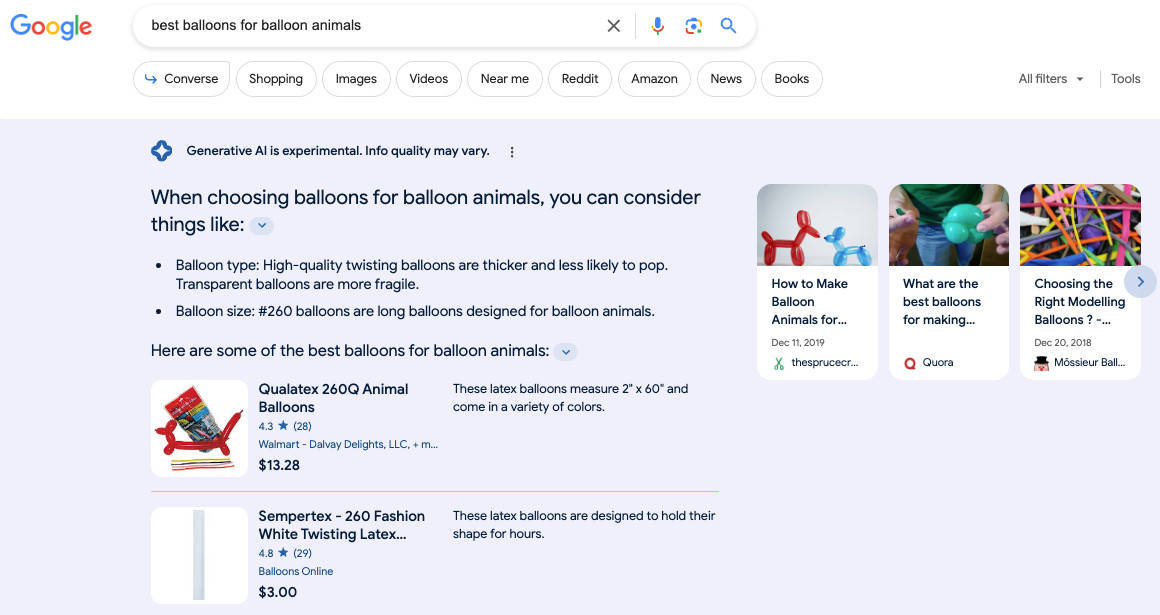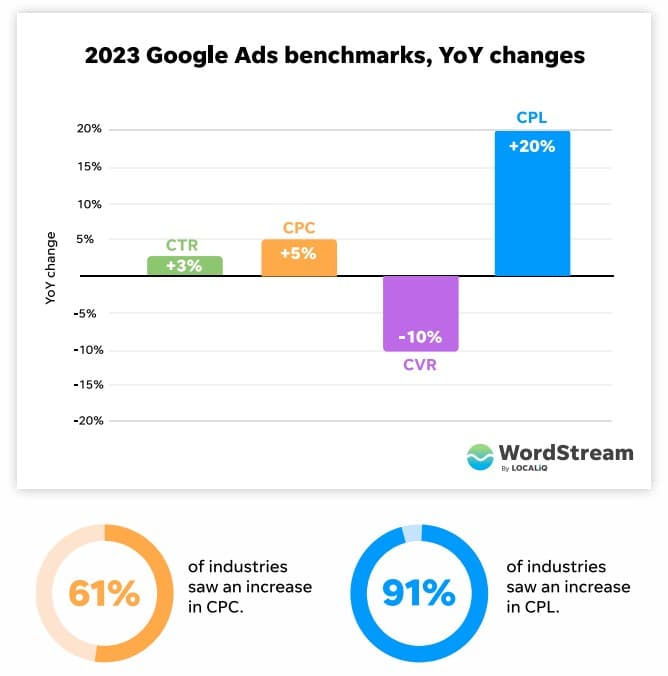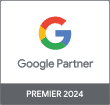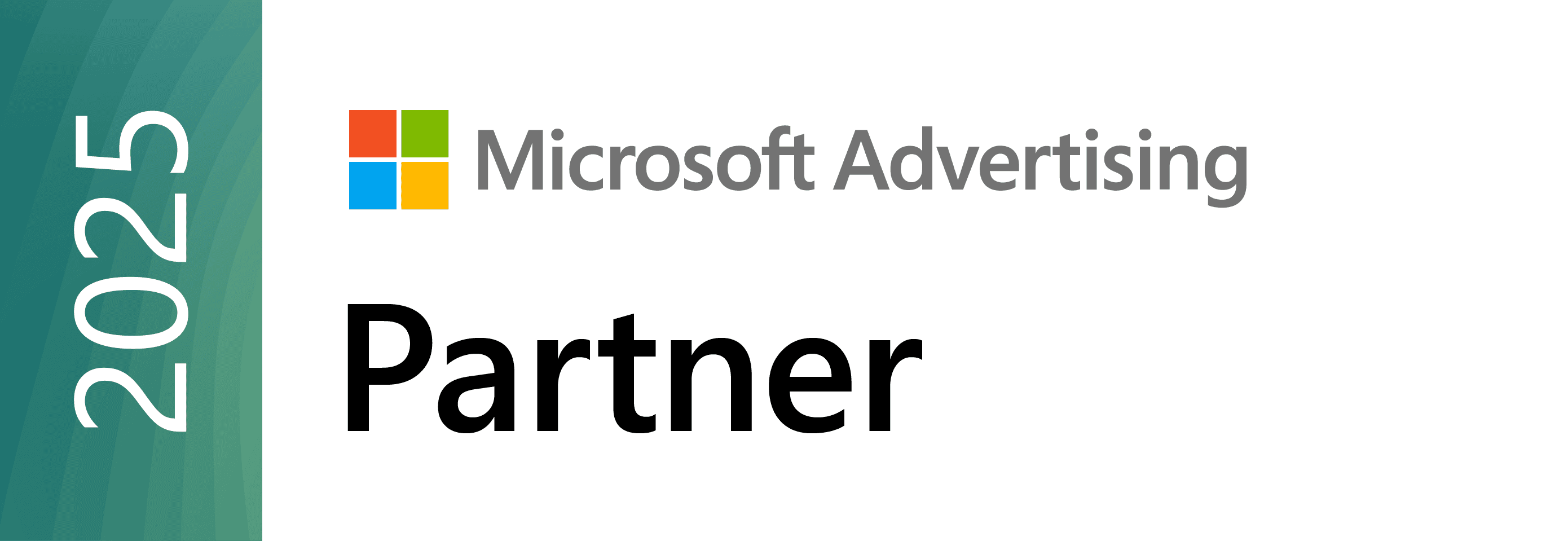The new year brings with it many joys — but finalizing your 2024 marketing strategy probably isn’t one of them.
Still, if it’s not yet set in stone, now is the time to finalize your plans, or risk being caught unprepared for the industry changes to come in the next 12 months.
Consider this guide your 2024 digital marketing almanac. Use it to build a strategy that will help your brand withstand the wind, weather, and other stressors it will contend with over the next year.
In the meantime, if you want an expert to craft the best approach for your business, we’re always happy to help.
The Top Digital Marketing Trends We’re Watching in 2024
As marketing architects for clients across a variety of industries and niches, we know what makes the difference between a successful strategy and one that just doesn’t do the job.
With our decades of experience, we’ve gotten good at reading the signs and telling the difference between the squalls that will blow themselves out and those that will grow into major storms.
These are the ones we’re keeping an eye on for the coming year.
- Privacy as a Priority
- The Growth of Automated Advertising
- The Ease & Risks of AI Content Generation
- Google’s New Search Generative Experience
- Increasing Advertising Costs
- The Complexities of Google Analytics 4
- The Possibilities of Programmatic Advertising
- New Opportunities for Video Advertising
- The Growth of Generation Z
1. Privacy as a Priority
Customer privacy concerns have arguably become the biggest factor for digital marketing in the 2020s — and will have a huge impact on your 2024 marketing initiatives.
As a quick recap:
The first lightning strike came when the European Union rolled out the General Data Protection Regulation (GDPR), introduced in 2016 and enforced starting in 2018. However, the biggest strike so far was the release of the iOS 14.5 update in 2021, which gave iOS users the ability to opt out of third-party data tracking in apps. This created a huge hole in data collection, impacting advertisers’ ability to target audiences.
This storm isn’t done yet, though.
Despite previous implementation delays, Google still plans to eliminate third-party cookies entirely on Google Chrome by the second half of 2024 — replacing them with the “Privacy Sandbox” solution that claims to provide good targeting while protecting individual privacy.
Other than a vague description, we don’t know what that looks like yet, though API access and testing are commencing on the system.
Based on Google’s multiple delays of this step, it seems they don’t, either.
How You Should Prepare:
The solution to the loss of third-party data? More first-party data. This means collecting more information from visitors to your site and, especially, purchasers or customers.
You’ll need to invest in technology to improve customer data collection without affecting user experience in a way that might reduce your conversions. Remember: Online sellers are already seeing a decline in conversion rates, and they’ll likely decline further as these privacy changes further restrict your ability to target specific audiences.
As your first-party data collection increases, you’ll see conversion rates bounce back — but it may never achieve the same heights as before.
Make sure you’re also budgeting to properly leverage any first-party data through email marketing, cart abandonment follow-up, and other high-yield strategies. Customer retention should also remain a top priority because improving customer loyalty can reduce costs and increase revenue.
Bottom line: Make first-party data one of your biggest priorities in 2024, so you’ll be better prepared in the years to come.
2. The Growth of Automated Advertising
Automation is the proverbial dark cloud with a silver lining. It has the potential to improve your marketing campaigns, but, when left untended or used improperly, it can also harm your performance and cost you a lot of money.
The key to handling this trend is knowing that artificial intelligence can’t be the only intelligence controlling your campaigns.
Let’s take Google, for example. Tools like Performance Max use AI to assemble ads and place them in what it considers to be the best positioning to reach customers. Other approaches go even further.
The video below is hosted on YouTube. If you need assistance with viewing the video, please contact info@goinflow.com.
Auto-applied recommendations take control of your ad spend out of your hands and put it in the machine’s. Although Google offers incentives to enroll in its program, we’d caution against it. We’ve had to fight for ad credits for clients who’ve lost money due to poor performance and reduced revenue from automatic account changes.
It’s like turning your customer experience over to chatbots. They may be better than ever, but they’re still no substitute for human interaction. Make sure you have someone, either an in-house marketing team or a digital marketing agency, overseeing what automation is doing with your campaigns.
How You Should Prepare:
In addition to budgeting for someone to monitor automated campaigns on Google, Meta, and other platforms, you need to be prepared for larger-scale campaigns. AI will usually reach the right solution, but machine learning needs more data to work with, and that’s expensive.
For example, where you might have been able to spend $100 to earn $200 in the past, you might now earn $0 from $100. However, $1,000 might earn you $2,500 or $3,000 (your figures might include one or more additional zeroes at the end).
This can make it hard for small businesses to get campaigns started, but it can lead to big growth once the campaigns are up and running.
If you’re a small business wanting to test the waters with automated advertising, Inflow’s experts can design a strategy based on your budget and goals. Contact us today to learn more.
3. The Ease & Risks of AI Content Generation
With the abundance of tools like ChatGPT, automated content creation is now at every marketer’s fingertips. However, more content doesn’t equal higher-quality content.
AI-generated content is the new iteration of the “content farms” of old, flooding the internet (and Google’s search engine results pages) with mass-produced content designed to improve rankings and organic traffic.
The problem: ChatGPT is trained on the content that already exists out there, which means any content it creates is not especially thought-provoking or unique.
We expect to see more sites get penalized for low-quality content in the year to come as certain marketing teams rely solely on generative AI to fill their blogs. Successful content marketing in 2024 will be deployed by those who use ChatGPT solely as a brainstorming tool, choosing instead to invest in unique, thought-leadership content written by real humans.
How You Should Prepare:
It’s easy to fall into the trap of using ChatGPT or other tools to quickly pump out content for your website, blog, or other marketing channels. While this content is a great place to start, we highly recommend relying on human writers and editors to review the content and add your brand’s personal insights or tone.
For example, you can use ChatGPT to brainstorm topics or even outlines — but we advise against hiring it as your full-time writer, or risk your content sounding the same as everyone else’s out there.
The video below is hosted on YouTube. If you need assistance with viewing the video, please contact info@goinflow.com.
4. Google’s New Search Generative Experience
One of the storms brewing on the SEO horizon is Google’s upcoming Search Generative Experience. Until now, we’ve only experienced it in beta testing mode — but we anticipate SGE to be launched early in 2024, changing the SERPs as we know them.
Google’s SGE aims to incorporate AI-generated content into the search results, offering recommended links, further reading, and more. Unlike previous SERPs, this content is generated by Google’s AI chatbot — not pulled from a specific site.

We’ve watched SGE evolve since its beta launch earlier this year, and we’ll probably see a few more changes before the update is released into the wild. Regardless of the final product, we are anticipating SGE to cause a drop in organic traffic to websites, due to lower click-through rates and organic impressions.
How You Should Prepare:
Your search engine optimization strategy will be of utmost importance in 2024 to avoid drastic impacts from the Search Generative Experience. Not only will you need to continue investing in high-quality content, but you’ll also need to consider strategies like branded content to make sure the right information about your business is pulled into the SGE box.
You can learn more about our expert’s specific SEO recommendations in the video below, but here’s the bottom line: You should be ready to up your SEO efforts in the year to come, with smart optimization from an agency like Inflow.
The video below is hosted on YouTube. If you need assistance with viewing the video, please contact info@goinflow.com.
Need help creating an SGE-proof SEO strategy? Reach out to our team to get started.
5. Increasing Advertising Costs
In today’s challenging economic climate, pay-per-click (PPC) advertising, like everything else, is getting more expensive.
A new analysis of Google search advertising costs shows that the cost per action (CPA, sometimes framed as cost per lead or CPL) increased for 91% of industries in 2023.

Overall, the average CPA increased by 20%. However, the average cost per click (CPC) only increased by an average of 5%.
Driving this cost increase is a decline in conversion rates, which dropped by an average of 10%. The apparel/fashion/jewelry (-34.9%) and arts and entertainment (-36.2%) were hit hardest, while the shopping/collectibles/gifts (-7.1%) and health/fitness (-10.1%) industries stayed close to industry lines.
The only two industries to see an increase in conversion rates in 2023: education/instruction (+19%) and beauty/personal care (+11%).
What else is driving these increased costs?
Inflation likely plays a huge part (especially in the first half of 2023), but there are also industry-wide trends to keep in mind.
In some cases, we might explain lower conversion rates in terms of consumer behavior related to larger trends. For example, as pandemic-era restrictions come to an end, customers have returned to in-person shopping, where they can physically see, touch, and try on items.
Likewise, a huge pent-up desire for travel gave the industry one of the highest click-through rates (CTR) of all industries in 2023. However, shrinking budgets and the reality of crowded airports, canceled flights, and other travel hassles may keep people from buying.
Of course, smaller audiences and less-efficient targeting due to privacy restrictions also play a part, as mentioned in the first trend of this report.
How You Should Prepare:
At the risk of sounding like a broken record, expect to pay more for your paid search ads in 2024.
Look at the full Google ad cost report to get a sense of what’s driving increasing costs of PPC advertising in your industry. That can help you understand why your ad costs are rising and what may be the best response strategy for your brand.
Some of our recommendations for cutting costs:
- Invest in a conversion rate optimization program, which will identify the impediments holding your potential customers back from making a final sale.
- Move some of your digital advertising to channels with less competition. For example, while 98% of advertisers use Google and 42% advertise on LinkedIn, only 15% advertise on TikTok and Pinterest.
6. The Complexities of Google Analytics 4
Google Analytics is now the name of the game for former Universal Analytics users — but most marketers are nowhere close to using it to its full potential.
As a reminder, GA4 isn’t just an upgraded version of UA. Instead, it’s a completely revamped system that tracks several types of data differently, including:
- Users
- Sessions
- Events
- Goals/Conversions
The video below is hosted on YouTube. If you need assistance with viewing the video, please contact info@goinflow.com.
When used correctly, GA4 can reveal valuable insights for your marketing teams and business (and its reporting and predictive capabilities are growing every single day). However, without a proper understanding of this data system, you will be leaving valuable information on the table in 2024.
How You Should Prepare:
If you haven’t already, make Google Analytics 4 training a priority in the new year. The more your team understands what they’re looking at in the reporting platform, the better they can draw conclusions and make appropriate strategy optimizations.
In addition, if you’re not 100% confident in your GA4 setup, consider investing in an account audit. This will ensure all of your events are being tracked properly, that data isn’t falling through the cracks, and that you’re taking full advantage of what GA4 has to offer.
After that, we recommend staying up-to-date on all the latest releases from Google and coverage from industry leaders to keep optimizing and enhancing your data tracking/reporting strategy.
Learn more about how we can build a personalized GA4 strategy for your business needs by contacting us today.
7. The Possibilities of Programmatic Advertising
Programmatic advertising is nothing new. Using automation to bid for display ads has become the dominant approach for buying online ads. This approach to advertising now accounts for about 90% of all display ad sales, with significant penetration into new ad markets like connected TVs (CTVs).
However, what is new is the extent of benefits that programmatic advertising gives you, both in terms of reach and in terms of control, making it an essential marketing tool for 2024.
With programmatic advertising, you can reach a larger audience that matches your target demographics. It allows your advertising to follow consumers across platforms, including not just different websites, smartphones and desktops, but even TVs, streaming ad content, and potentially other connected devices.
It’s as close as you can get to omnichannel advertising, especially if you also have a physical storefront. Connected TV advertising is especially effective for brand awareness campaigns — and has become more affordable than in years past, especially for smaller brands willing to test these waters.
Being able to access streaming ads is more important than ever, with the majority of CTVs showing content with ads. Even Netflix, the still-leading streaming platform, has introduced a less-expensive tier supported by advertising.
Using programmatic advertising can easily extend your brand’s reach into these markets.
Depending on the programmatic approach you use, you might even be able to sidestep ad blockers. Some programmatic advertising gives you access to native ads that can avoid ad blockers, which focus on third-party ad content.
Programmatic advertising also gives you great control over your multiple advertising channels. Critical to the success of omnichannel advertising is creating a unified experience. Programmatic advertising gives you a central source for your ads, so that you can provide the same quality and consistent advertising, regardless of the channel.
In addition, the unified dashboard lets you monitor and compare the effectiveness of the different channels to effectively balance your ad budget, putting your money where it’s most effective.
How You Should Prepare:
Programmatic advertising can give your ads unprecedented reach with the potential for significant cost savings, buttressing your budget against some of the worst tempests in the coming year.
However, it’s important to carefully monitor all your ad channels. For example, people will sell streaming TV ads with claims about a 96% view rate, but the reality might be that many ads you pay for might be “shown” when the TV is off.
Be vigilant to make sure you’re getting a good return on ad spend (ROAS) for all channels.
8. New Opportunities for Video Advertising
Video advertising is officially the fastest-growing type of digital marketing in 2023. And, thanks to the popularity of short-form videos on TikTok and Instagram Reels, you can find these ad opportunities on almost every platform you could imagine — including Google itself.

Outside of individual platforms, new technologies like AI–powered video automation, augmented reality, and virtual reality have taken video production to the masses. However, in our experience, it has been a slow uptake for many businesses concerned with the time and financial costs of gathering creative and hiring experienced professionals.
But, with video ad spending estimated to reach $92 billion in 2023 alone, your brand simply can’t afford not to invest in this channel.
And, as our work has proven, you need not invest in professional-level video to see stunning results.
How You Should Prepare:
Video creative is well worth the time and effort spent gathering it, so add it to your to-do list in 2024.
We recommend starting with your organic social team. Which video content has performed best with your customers? Is there any user-generated video content that can be curated into ads? This will be your path of least resistance.
Then, use some of the above-mentioned tools to create testable video ads. Don’t be afraid to try any new capabilities that are launched within certain ad platforms; creativity and a willingness to experiment (plus a healthy budget) will help you scale and optimize your video strategy into 2024.
9. The Growth of Generation Z
Although much recent marketing has been targeted at Millennials, we’re starting to see the upcoming dominance of Generation Z.
Gen Z is already entering the workforce, representing about 20% of the workforce and 23% of the adult population by 2025. This means that now is the time to start laying the foundation for your digital marketing efforts for this new generation.
Starting now has several benefits:
- You’ll be entering a less competitive market sector.
- You’ll be able to start building a relationship with these new consumers that will lay the groundwork for a lifetime of spending habits as their resources increase.
How You Should Prepare:
The key to reaching Gen Z is social media marketing.
A full 97% of Gen Zers report that social media is their main inspiration for what to buy. While this might decline as the cohort ages, social commerce will remain a critical approach to reaching this newest group of shoppers. Specifically, 83% of Gen Z and Millennial users think that there should be a direct link from social media ads to the advertised product’s web page.
So, whether you’re using eCommerce PPC strategies, influencer marketing, or other approaches, make sure you include direct links to product pages or other places to buy.
In addition, the balance of power among social media platforms will shift as Gen Z’s clout grows. We can expect to see Facebook and Pinterest decline (the latter quite rapidly), while TikTok and Instagram increase.
As with everything Twitter these days, its future under the Gen Z regime is uncertain.
Building Your Best Strategy for 2024
There you have it: Our list of the top digital advertising trends to keep an eye on when creating your marketing strategy for the new year.
As our list reveals, not only is digital marketing always changing but doing it right is getting harder and harder. If your team isn’t careful, the cost of mistakes can scale even more quickly than returns.
To minimize those costs and maximize your returns, it’s important to work with experts who understand these changing trends and how to successfully test strategies and develop effective campaigns around them.
If you don’t have these experts at hand (or your current agency leaves something to be desired), now is the time to invest in a new team for 2024.
While we of course recommend our strategists here at Inflow, there are plentiful experts out there to assist you. But don’t wait too long; the new year is right around the corner!
If you want help creating an industry-leading digital marketing strategy for 2024, our team can incorporate all of new these trends (and more) into an approach that drives traffic, sales, and revenue for your business. Request a free proposal now to get started.










0 Comments